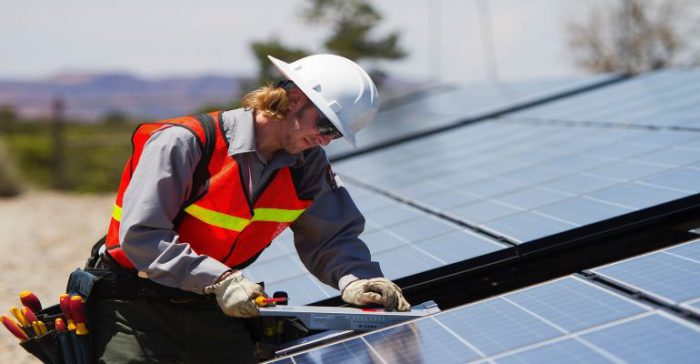ase.org, June 15, 2020.
It’s no secret that COVID-19 upended any expectations for what 2020 might look like, but the impact on the energy efficiency sector has been particularly devastating. At the end of 2019, the efficiency industry celebrated unprecedented growth with potential for an even stronger year ahead. But instead, the industry saw a shocking 413,000 jobs lost in March and April. While May’s analysis, released by E2, E4TheFuture, and other partners, found that job losses slowed to 18,900, it showed an industry continuing on a downward trend, with significant uncertainty about what’s next.
Some sectors of the economy have been lucky enough to start adding jobs back, but with many lockdowns and construction freezes remaining, energy efficiency is unlikely to join in this upswing without timely Congressional action. Nearly 80% energy efficiency companies are small businesses with fewer than 20 employees, raising concerns over how many layoffs have been shielded by the temporary Paycheck Protection Program. It’s clear that with a total of nearly 432,000 energy efficiency jobs lost since the start of pandemic, a more permanent solution is needed to stimulate this sector’s rebound and put hundreds of thousands of workers back on the job.
How Congress Can Help
Since March, the Alliance has been pushing for four policy proposals that will address this crisis and prepare our country for a more resilient and sustainable comeback:
- The Small Business Energy Efficiency Grant program would leverage federal funding to provide small businesses with energy efficient upgrades at zero cost. This supports the 1.3 million-strong workforce ready to make these upgrades possible and could result in savings as high as 40% for small businesses’ utility bills.
- The Mission Critical Facility Renewal Program would put energy efficiency workers on the job retrofitting public buildings such as schools, hospitals, and military facilities. A recent report from the Government Accountability Office underscored the desperate state of schools, and how efficiency upgrades could help.
- Expanding energy-efficient tax incentives would create jobs while providing homeowners and businesses with dual savings on utility bills and taxes. Similar expansions were made in the American Recovery and Reinvestment Act of 2009, generating billions of dollars in economic recovery. More than 800 businesses have signed our letter in support of this proposal.
- Transportation and infrastructure investments are proven job creators; for example, public transit can generate and sustain 50,000 jobs for every $1 billion invested. A number of targeted investments can put jobs on track for net gains while preparing transit for the future.
Efficiency Is Worth Saving
COVID-19 has spared few areas of our economy, and Congress is certain to be fielding pleas from every sector around. But as Alliance Honorary Board Member Rep. Paul Tonko (D-N.Y.) recently said in an interview with POLITICO, the record growth of clean energy jobs prior to the pandemic is a sign that recovery should focus on bringing this sector back: “The focus needs to be on a clean energy, energy-efficient outcome.” These jobs are often local, well-paying positions that benefit communities by reducing emissions, lowering utility costs, and creating healthier living spaces. With a long road ahead for recovery, Congress would be wise to act quickly to prevent further losses and return energy efficiency to pre-pandemic growth.
